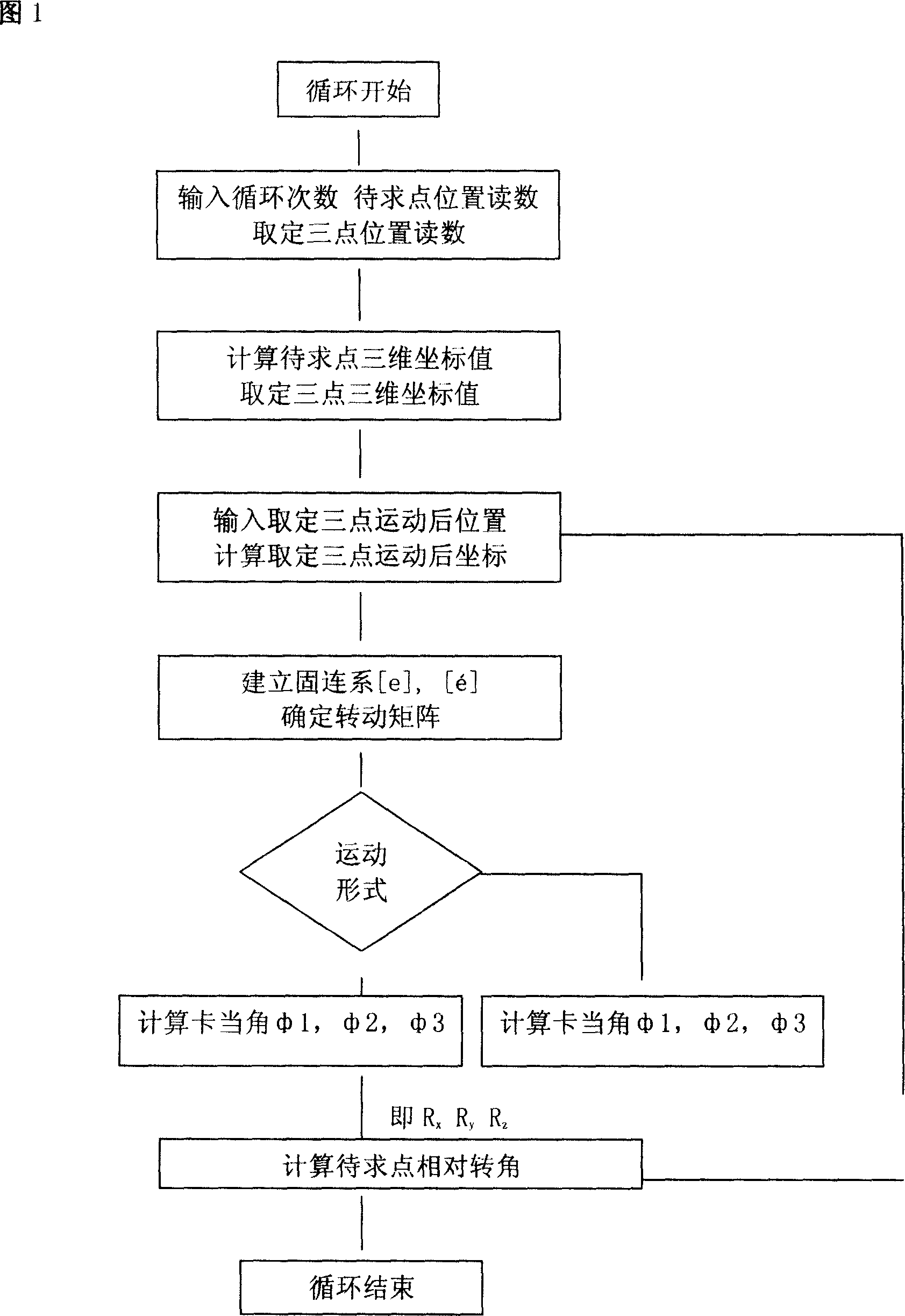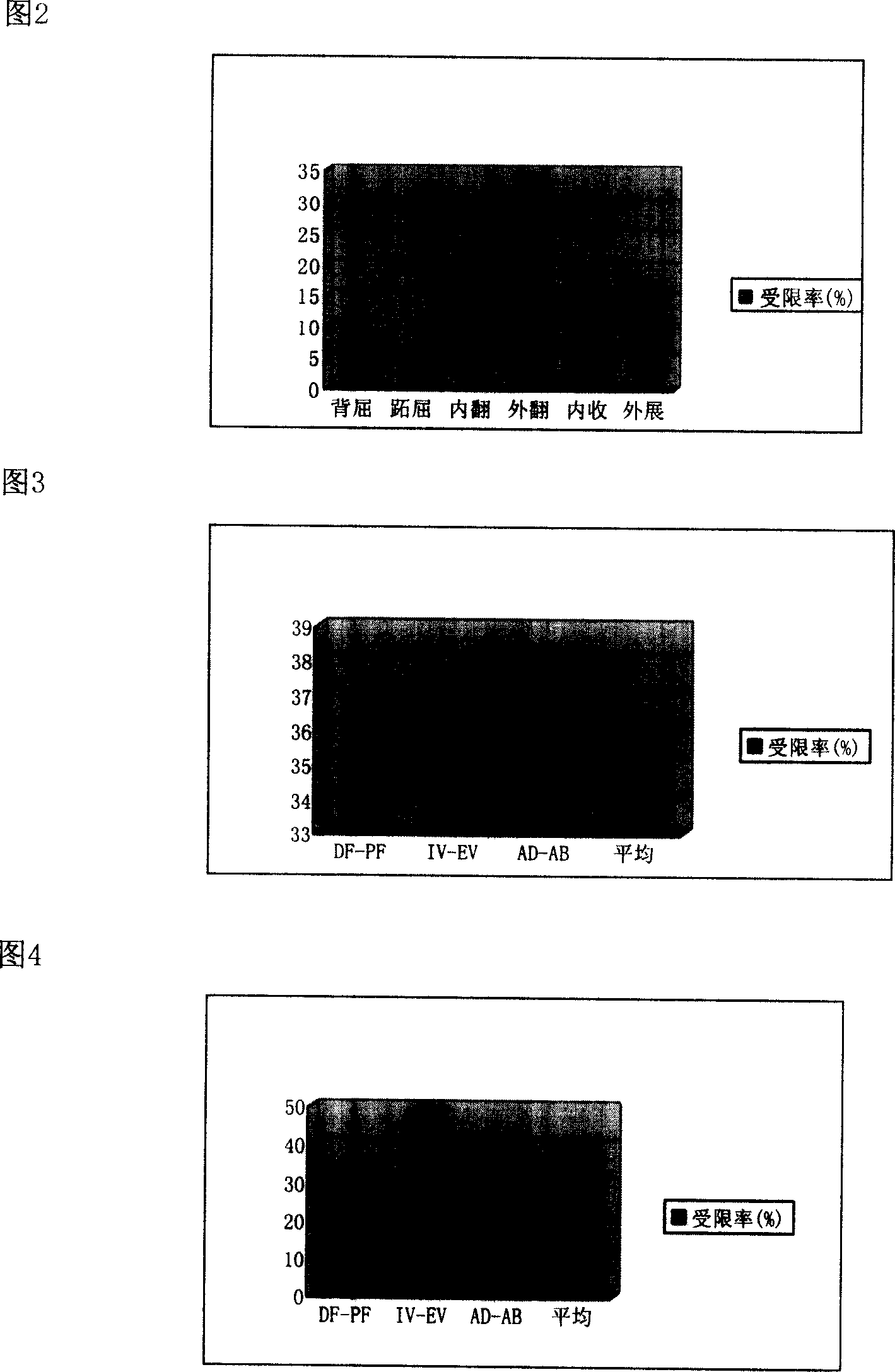Method for testing the movement degree variation of the joints between bones
A joint movement and joint technology, applied in the field of biological and medical experiments, can solve the problems of lack of research methods and measurement methods, lack of
- Summary
- Abstract
- Description
- Claims
- Application Information
AI Technical Summary
Problems solved by technology
Method used
Image
Examples
Embodiment 1
[0046] 1) Experimental specimens
[0047] 12 fresh experimental calf-foot specimens discarded from surgery were used, and stored in a deep-low temperature refrigerator at -70°C. All specimens were uniformly preserved from the tibial shaft osteotomy plane to the plantar level of 30cm. The appearance was normal, and there was no injury or contracture of muscles, ligaments and tendons. X-rays were taken to exclude bone and joint degeneration and metabolic Skeletal diseases such as diseases, tumors, deformities and bone abnormalities. Before the start of the experiment, the specimens were thawed at room temperature, and after pretreatment, the intact ligaments, tendons, and joint capsules were preserved.
[0048] 2) Fixation and loading of experimental specimens
[0049] The tibia of the specimen was fixed with a steel fixing frame, and the position of the fixed steel ring was adjusted through adjustable screw screws in 7 directions, so that the specimen was basically perpendicu...
PUM
 Login to View More
Login to View More Abstract
Description
Claims
Application Information
 Login to View More
Login to View More - R&D
- Intellectual Property
- Life Sciences
- Materials
- Tech Scout
- Unparalleled Data Quality
- Higher Quality Content
- 60% Fewer Hallucinations
Browse by: Latest US Patents, China's latest patents, Technical Efficacy Thesaurus, Application Domain, Technology Topic, Popular Technical Reports.
© 2025 PatSnap. All rights reserved.Legal|Privacy policy|Modern Slavery Act Transparency Statement|Sitemap|About US| Contact US: help@patsnap.com



